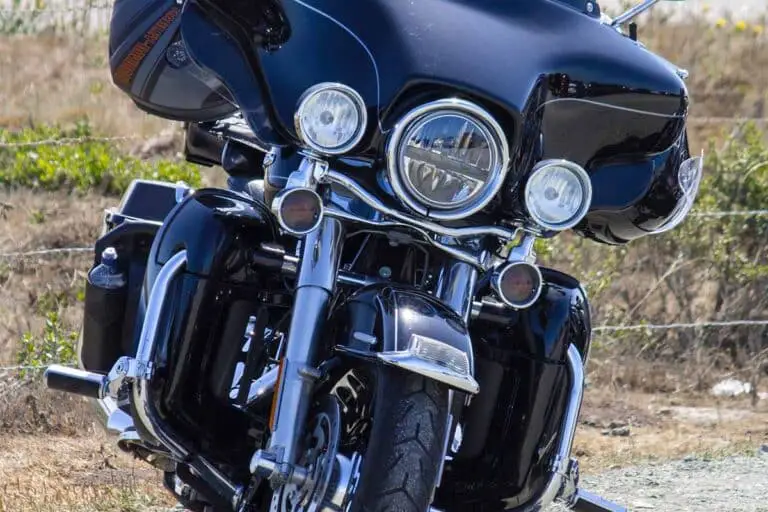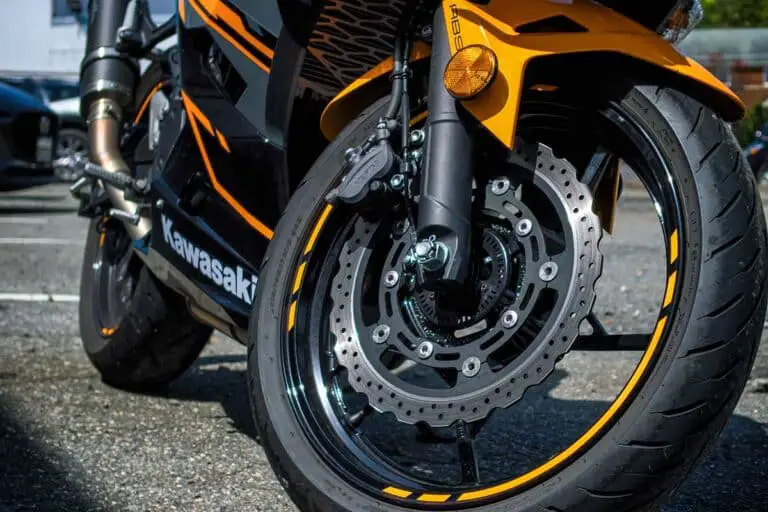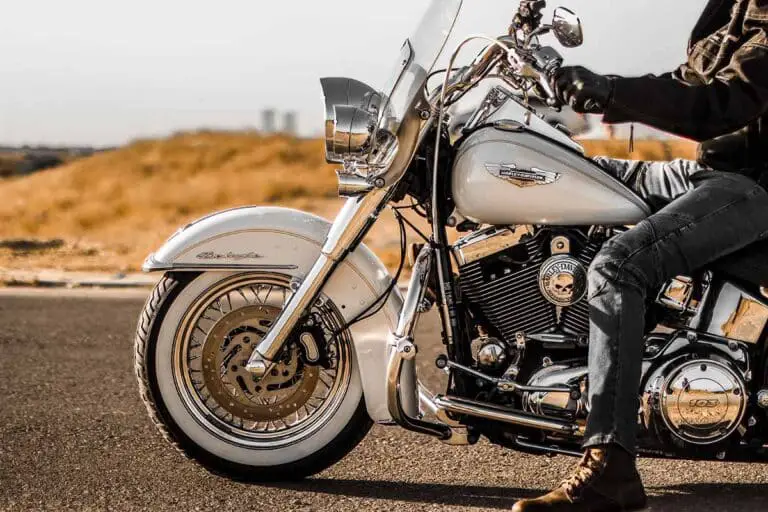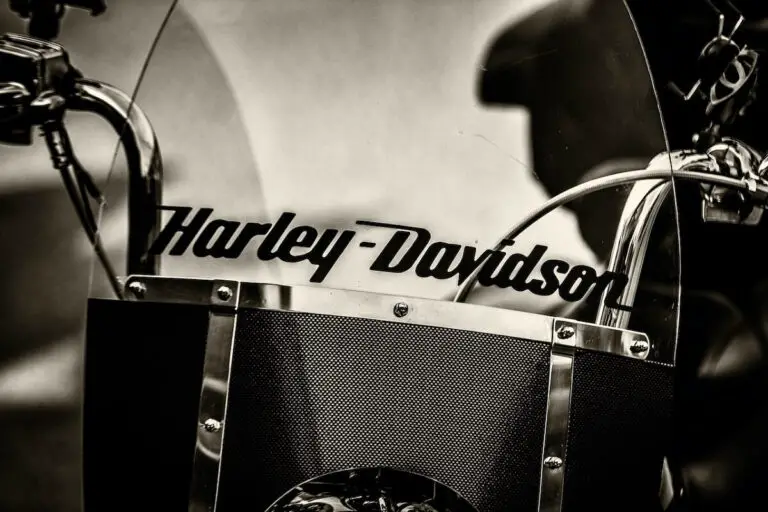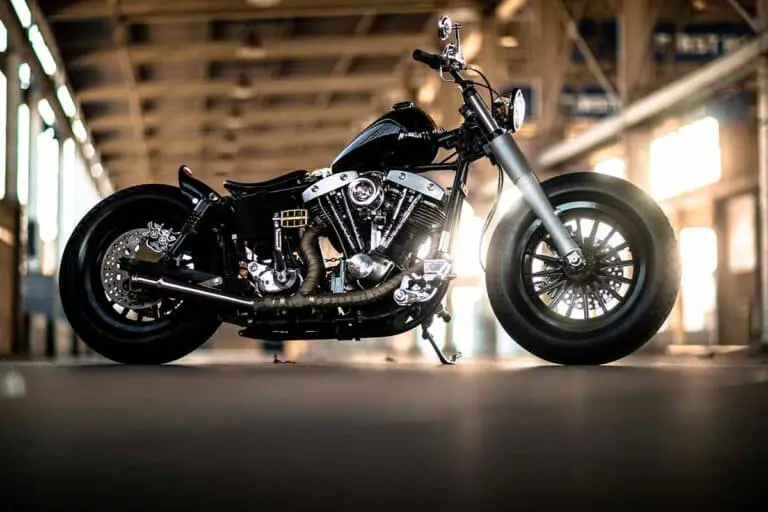Harley Davidson Panhead History & Review
Disclosure: We may get commissions for purchases made through links in this post.
One of the most quintessential power mills ever made was the Panhead, an engine layout produced by Harley-Davidson in the late ’40s. A successor to the Knucklehead, it earned itself a celebrated status — having rectified overheating problems and making worry-free long-distance riding possible.
Since these motorcycles are still in high demand, it would be curious to know more about the Panhead’s history and evolution.
The Harley-Davidson Panhead is a retronym referring to an engine blueprint produced by the American firm from 1948 until 1965. This power mill had a piston displacement of 997—1,200 cc (61—74 ci), spewed 50—60 hp, and was at the heart of all HD Hydra-Glide and Duo-Glide production models.
Out of all the early Harley engines, the Panhead is the easiest to recognize — thanks to its tappet placement and upturned pan-looking valve covers. It is also considered the most iconic of the lot.
This engine blueprint may not have totally eradicated wet-sumping issues back in the day. Nevertheless, it helped spawn the technologically advanced HD power mills we enjoy.
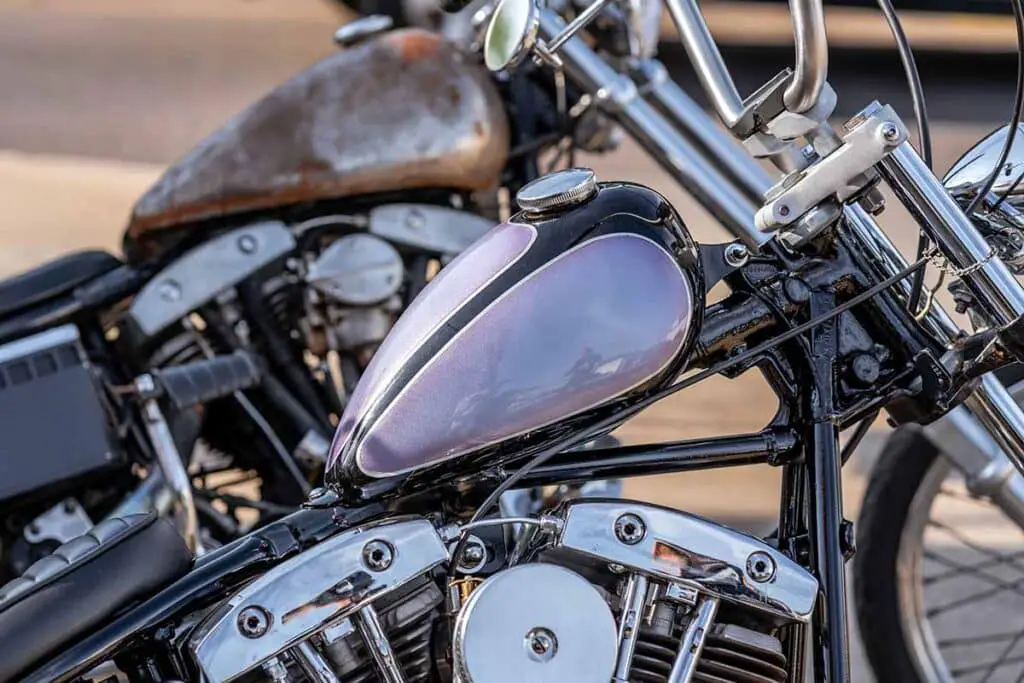
The Illustrious Harley Davidson Panhead
For knowing motorheads (and me, personally), the Panhead is a defining period in Harley-Davidson’s Big Twin history.
This 2nd generation FLH engine (3rd if counting from the Flathead) was witness to many design milestones, such as the launch of hydraulic lifters and rear suspension, putting it at the heart of all Hydra-Glide and Duo-Glide production models.
The 1948 Panhead kick-started this era with its signature single-piece valve covers and part-aluminum composition. Throughout its lifetime, the engine blueprint underwent oil pump and bearing size upgrades, at least six crankcase revisions, and several power output enhancements.
It finally bid the production lines farewell in 1965, making way for the lighter Shovelhead.
Overcoming Problems
Although the earlier Flatheads and Knuckleheads were revolutionary, they carried many systemic problems. Among the most prevalent of these were oil containment issues and overheating.
For instance, the Knucklehead’s dry-sump oil lubrication proved far from being leak-proof (not to mention easily exacerbated by an overheated engine).
Harley-Davidson’s attempt to simplify these impediments birthed the Panhead. At that time, HD engineers thought that equipping the power mill with single-piece valve covers (view on Amazon) would prevent oil leakage regardless of engine temperature.
They also backed this up by upgrading the head material from cast iron to aluminum to improve heat conductivity and by incorporating hydraulic adjusters atop the pushrods to reduce required valve clearance adjustment and offset increased heat expansion.
Further Design Improvements
The whole idea behind the Panhead resolving oil leakage and overheating was not entirely wrong. After all, the redesign successfully overcame overheating problems tracing back to Flathead engines. However, the concept was incomplete.
Parts of the ‘solution’ gave rise to more issues. One example is the hydraulic adjuster ports being more prone to particulate blockage. Another example is the single-piece Panheads expanding considerably larger than the cast-iron cylinder base, resulting in valve lash.
With new problems unfolding, additional amendments were applied not only to the engine but to the entirety of these motorcycles.
Below are design refinements during the Panhead’s first four years (source: Cycle World):
- A felt blanket covered rocker gears to provide an extra oil source and reduce valve noise caused by plugged hydraulic valve adjuster ports.
- Rocker arms redesigned to rotate on bolted-together axles.
- Oil pumped through cylinder head drillings and into the rocker supports
- The ‘outdoors’ double-gear oil pump (view on Amazon) was enlarged to circulate oil faster.
- New telescopic forks and an enlarged front brake drum were introduced in 1949
- Newly-designed cams from 1949 given chrome-plated piston rings, clearance ramps, and one-piece rockers in 1951
In the next 14 years, HD was still hard at work in perfecting the Panhead:
1952
- Valves coated with black, non-metallic phosphate absorptive material to improve oil retention (a.k.a. Parco Lubrizing)
- Hydraulic clearance adjusters moved to the bottom of pushrods.
- Cam and port changes yielded a 10% increase in claimed horsepower.
1953
- Exhaust valve hot-spotting was addressed by adopting valve roto caps and proper contouring of rocker-arm valve-operating tips.
- Oil-return grooves on the crankcase and cylinder-mating surfaces were discontinued to enable direct oil drain to the crankcase.
- Hydraulic clearance adjusters were relocated into roller tappets, and an oil screen was added to the feed line to prevent particulate blockage.
1955
- FLH models given Hycar rubber-infused asbestos base gaskets, boosting power output to 60 hp
- The left crankcase was strengthened and equipped with Timken tapered roller bearings (replacing old cylindrical rollers) on an enlarged sprocket shaft.
- Crankpin and sprocket main shaft made of 4620 steel; engine intake Y-manifold enhanced with O-ring ports.
- Valve covers changed from 6-bolt to 12-bolt configuration.
1956
- New ‘Victory’ cam and polished intake ports on FLH models increased claimed horsepower by another 12%
1958
- Increased cooling fin depth on cylinder heads for improved heat dissipation
- Exhaust valve guides (view on Amazon) on FL and FLH models upgraded to alloy steel, plus new exhaust valve material introduced.
- FLH models received heftier inner and outer valve springs
- The pinion main shaft diameter increased, and its bearing changed to two retainers with 14.5-inch rollers.
- Crankcase side cam upgraded to Torrington full complement needle.
- A new crankcase breather and hydraulically-operated rear brake were added.
1959 to 1965
- Dry-clutch plates increased to five.
- Crowned rollers were applied to the pinion-side main bearing, and ‘crowing’ was adopted to extend the life of the rollers.
- External oil lines from tappet blocks to OHV rocker assembly replaced previous cylinder head drillings.
- The valve composition was upgraded to Nimonic-80A, the same material used on jet engine turbine blades.
- Panhead motorcycles carried over to the debut of Electra-Glides when electric starting was introduced.
1958 was the busiest HD had ever been, immensely due to the introduction of a rear suspension that led to the Hydra-Glide retronym.
This year also marked the beginning of the Panhead’s weight-gain journey — a detriment to HD Big Twins’ power-to-weight ratio that the Shovelhead later tried to resolve.
Flatheads vs. Panheads
Spotting the difference between these two engine types may be easy for the motorcycle savant but not as much for the inexperienced. It is understandable because if you base things solely on their retronyms, one would imagine these two have the most similarities.
Fortunately, several points separate the two. First is the period they were produced. Flatheads were pre-war makes, while Panheads were post-WWII. Second is the placement of their screws.
Both engine types utilized flat-top screws. But unlike Panhead screws, Flatheads had screws tapered flush on the underside of the cylinder head.
The third is the appearance of their cylinder heads. Flatheads had cooling fins on their heads and not just around the cylinders. Meanwhile, Panheads looked like upended cake pans covering the cylinder heads.
This 3rd point is their biggest differentiator, causing Flatheads to be confused more with Knuckleheads than with Panheads.
“Captain America” Panhead Chopper
According to Old Bike Barn, approximately 100,000 Panheads were sold during its 18-year production run. This large motorcycle count implied success and significance during the post-WWII motorcycle boom. The timing was key to the Panhead motorcycles’ success, but so was the chopper movement.
Several factors contribute to its role in the chopper culture. Memories from riding Harley WLAs in combat is one, while a new-and-improved national highway infrastructure is another.
However, a couple of things tower over these two. One is the Panhead’s ready availability in the used-bike market. Another is the low-budget indie bicker flick Easy Rider.
The underrated film surprised everyone by becoming the 3rd highest-grossing movie of the year. As if that was not enough, it earned two Academy Award nominations and made immediate stars of two Harley custom builds. One of these motorcycles was the stars-and-stripes-studded Panhead chopper ridden by lead actor Peter Fonda.
Dubbed “one of the most recognizable motorcycles of all time,” this handcrafted chopper featured a tufted ‘king and queen’ leather saddle, an ultra-long sissy bar, and pulled-back handlebars (view on Amazon).
Harley Panhead Variations
Between 1948 and 1965, at least 13 Harley Davidson’s Big Twins configurations were produced. These production models were made available in Standard, High Compression, and Traffic Combo trim packages, and all fall under three FLH variations — Hydra Glide, Duo-Glide, and the first year of Electra Glide.
Refer to my article on Harley FLH Meaning & History for more information on these variations.
Harley Panhead Models
As mentioned earlier, here is a non-exhaustive rundown of Panhead engine configurations and their corresponding production years based on my previous article and additional online research.
The first few years of the Panhead ran alongside 61ci E-Models. However, I excluded them from the list since they had Flathead engines.
| Model Name | Suffix/Identifier |
|---|---|
| 1948—1950 Panhead 74ci (Standard Compression) | F/FL |
| 1948—1950 Panhead 74ci (Base) | FS |
| 1951—1952 Hydra Glide | FL/FLS |
| 1952 Hydra Glide (Base, Foot-shift) | FLF |
| 1953—1956 Hydra Glide (Base) | FL |
| 1953—1956 Hydra Glide (Sport Solo) | FLE |
| 1953—1956 Hydra Glide (Base, Foot-shift) | FLF |
| 1953—1956 Hydra Glide (Sport Solo, Foot-shift) | FLEF |
| 1955—1964 Hydra Glide (High Compression) | FLH |
| 1955—1964 Hydra Glide (High Compression, Foot-shift) | FLHF |
| 1957—1964 Hydra Glide (Base) | FL |
| 1958—1964 Hydra Glide (Base, Foot-shift) | FLF |
| 1965 Electra Glide (Base) | FLB |
| 1965 Electra Glide (Base, Foot-shift) | FLFB |
| 1965 Electra Glide (High Compression) | FLHB |
| 1965 Electra Glide (High Compression, Foot-shift) | FLHFB |
Legend:
E in their suffixes = traffic combination “designed for slow-speed operation using special cams” and a smaller 61ci carburetor fondly referred to as “cop cams.”
F in their suffixes = denote the hand-shift/foot-clutch option
H in their suffixes = versions with a higher 8.0:1 compression ratio versus the standard 7.25:1
Harley Panhead Years to Avoid
Being as iconic as it is, one may think that all production years of the Panhead have led to faultless power mills. Well, this is true only to an extent. At best, we can describe the Harley Panhead configuration to be near-perfect.
1948—1952
While its design was ingenious, loopholes took another five years to be identified and corrected. The valve lash resulting from increased heat expansion of the new alloy head material was just one of these predicaments.
Hydraulic tappets were initially utilized to keep valve clearances up to spec, but even these parts were similarly prone to heat expansion, given their overhead placement.
Moving the erring tappets to a deep part of the crankcase rectified the oil-starvation problem of the Panhead. However, it also meant the end of life for 61ci EL models since their layout could not accommodate the new-and-improved high-compression prototype. This change took effect starting with the 1953 model.
This may not mean much for avid Harley fans, as most are happy owning any kind of HD motorcycle. But for those wanting a smaller-displacement Panhead but with big-bore mannerisms, their remaining options are limited to surviving Harley FLE models designed for low-speed riding instead of ripping through the interstate.
Experts’ Advice on Panheads
Purchasing a Panhead is not a decision to be taken lightly. Sure, the engine layout has proven itself formidable countless times. However, remember that this technology is 70 years old.
Unless you are passionate about learning in-depth about motorcycles, owning a Harley-Davidson Panhead may prove more of a hassle than a delight.
You should know the following weaknesses before riding a Panhead-equipped HD motorcycle. The below list is non-exhaustive but should suffice in preparing you for the experience:
- Aftermarket support is available but comes at a price.
- Braking is not as efficient as modern-day two-wheelers (but it can be outfitted with compatible hydraulic discs).
- Especially for earlier models without electric starters, revving the engine to life requires patience and a certain ritual.
- Even with improvements to the layout, oil leakage is only minimized and inherent to the engine.
- Given its age, it is more agricultural than sporty and would require some checking.
- It is on the heavy side — one of the main reasons the Shovelhead replaced it.
- You may have to go through different tire brands to find the best fix for high-speed wobbling.
If you are mechanically adept at dealing with the above, the only other consideration there is to have is how deep your pockets are. Even as a used bike, the price tag on a Harley Panhead is no joke — valued at close to $40,000 in some trader and auction sites.
Conclusion – Harley Davidson Panhead History & Review
The Panhead undeniably put Harley Davidson on the map, turning the OEM into a household name and making it the go-to brand for fresh-out-the-crate thumpers and custom builds. It inspired several ‘firsts’ for the FLH lineup — hydraulic lifters, rear suspension, and electric starting included.
With the Panhead engine, Harley-Davidson made sure to stay true to its American roots while improving long-distance comfort and driveability of its two-wheelers.
The changes made to this engine layout through the years led to improvements in suspension geometry and framework design (among other things), upholding HD’s legacy and strengthening its foothold in the motorcycle landscape.


